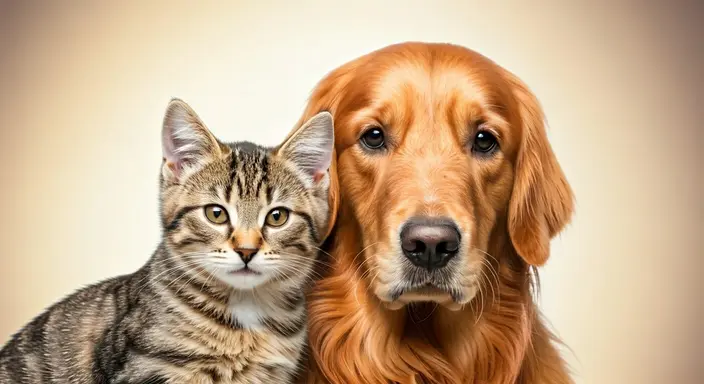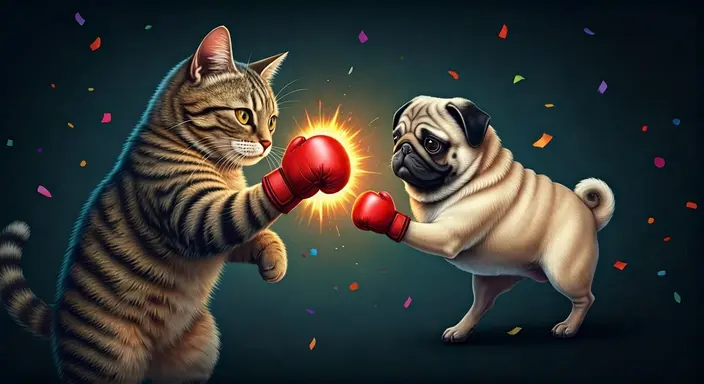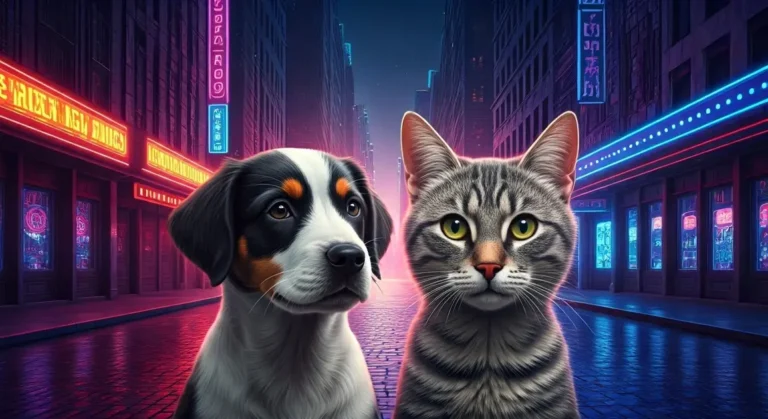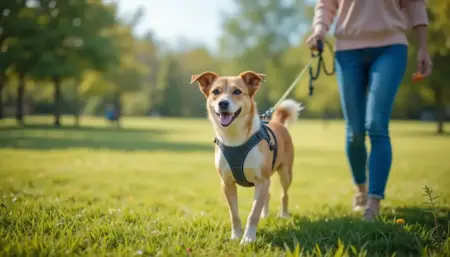In the age‑old debate of Cats vs Dogs, hidden traits reveal each animal’s true nature beyond the obvious cuteness. From silent body language to pack‑instinct loyalty, these subtle differences shape how they communicate, solve problems, and bond with humans.
Stay with us as we uncover the secret signals, social habits, and hidden abilities that define each species.
If you’ve ever wondered why your cat seems aloof while your dog wags its tail at every knock, the answer lies in these often‑overlooked traits.
Communication Differences in Cats vs Dogs
Pets speak in many ways, but the “language” they use varies dramatically. Recognizing the distinct communication styles of Cats vs Dogs helps owners respond appropriately and avoid misunderstandings.
How Each Species Sends Signals
- Vocalization
- Dogs: Bark, whine, growl, howl – clear, attention‑grabbing sounds.
- Cats: Meow (mostly to humans), purr (contentment or self‑soothing), hiss (defense).
- Body Posture
- Dogs: Tail wagging, relaxed ears, play bow (front legs down, rear up).
- Cats: Tail tip flick, arched back, ears flattened or sideways.
- Facial Expressions
- Dogs: Direct eye contact signals confidence; soft gaze indicates affection.
- Cats: Slow blinking is a “kitty kiss”; dilated pupils can mean excitement or fear.
- Scent Marking
- Dogs: Sniffing, rolling in scents, and leaving urine marks to claim territory.
- Cats: Rubbing cheek glands on furniture, people, or other cats to spread pheromones.
Quick Tips for Decoding Their Messages
- Listen first – a bark or meow often tells you what the pet wants.
- Watch the tail – rapid wagging usually means excitement in dogs, while a thumping tail may signal irritation in cats.
- Observe eye shape – soft eyes = calm; wide, staring eyes = alert or stressed.
Understanding these cues makes the daily interaction between owners and their Cats vs Dogs smoother and more rewarding.

Social Structure & Pack Mentality: Cats vs Dogs
When you compare Cats vs Dogs, the way they view hierarchy and companionship stands out. Dogs are naturally pack animals, while cats are more solitary yet can form complex social bonds.
Pack Instinct in Dogs
- Hierarchical Order: Dogs often recognize a “leader” (usually the human) and follow clear rules.
- Cooperative Play: They enjoy group activities, such as fetch or tug‑of‑war, and thrive on teamwork.
- Protective Behavior: Many dogs instinctively guard their pack members, including humans.
Feline Social Dynamics
- Territorial Solitude: Cats protect a personal territory and may be solitary for most of the day.
- Colony Living: In feral colonies, cats develop a loose hierarchy based on age and temperament.
- Alliances: Household cats can form strong bonds with each other and with people they trust.
When the Two Worlds Collide
| Trait | Cats (Typical) | Dogs (Typical) |
|---|---|---|
| Group Preference | Prefer solitary or small groups | Thrive in larger packs |
| Leadership | Looks to humans as pack leader | Looks to humans as the pack leader |
| Play Style | Stalk‑and‑pounce, solo toys | Fetch, tug, group games |
| Territorial Marking | Scent rubs, urine sprays | Urine marking, patrol walks |
| Response to Newcomers | Cautious, may hide | Curious, may greet enthusiastically |
Practical Takeaway
If you’re introducing a new pet, consider these social cues: let a cat explore a new environment at its own pace, while a dog may appreciate a guided walk with the family to feel included.
Playful Problem‑Solving: Hidden Traits in Cats vs Dogs
Play isn’t just fun; it’s the window into how Cats vs Dogs think, adapt, and learn about their surroundings.
Dogs’ Approach to Puzzles
- Goal‑Oriented: They see a treat or toy and work persistently to retrieve it.
- Trial‑and‑Error: Dogs will try multiple strategies—pawing, nudging, chewing—until success.
- Social Learning: Watching a human or another dog solve a puzzle boosts their performance.
Cats’ Approach to Puzzles
- Stealthy Exploration: Cats often stalk invisible “prey,” testing objects with a paw before full engagement.
- Precision: Their keen whisker sense guides delicate movements, especially with narrow openings.
- Independent Learning: Cats typically master a puzzle alone, relying on instinct rather than observation.
Simple At‑Home Enrichment Ideas
- Dog Puzzle: Hide treats in a Kong toy and rotate it daily.
- Cat Puzzle: Use a cardboard tube with a sliding lid to encourage batting and probing.
Why It Matters
Understanding these hidden problem‑solving traits helps you select enrichment toys that match each pet’s learning style, reducing boredom and unwanted behaviors in both Cats vs Dogs.
Emotional Intelligence: Understanding How Cats vs Dogs Feel
Emotions run deep in both Cats vs Dogs, but they express them in distinct ways. Recognizing these signals can strengthen the human‑pet bond.
Dogs’ Emotional Mirroring
- Reading Human Mood: Dogs can sense sadness, happiness, or anxiety through tone, posture, and scent.
- Comfort Behavior: They may nuzzle, paw, or rest their head on a person who appears upset.
- Excitement Display: A wagging tail, “zoomies,” and jumping are typical signs of joy.
Cats’ Empathetic Responses
- Quiet Presence: A cat may sit nearby or curl up on a lap when you’re down, offering subtle comfort.
- Purring Therapy: Studies suggest a cat’s purr frequency (25–150 Hz) promotes healing and reduces stress.
- Attention Shifts: A cat might bring you a toy or gently tap you with a paw to cheer you up.
How to Foster Emotional Connections
| Action | Dogs | Cats |
|---|---|---|
| Consistent Routine | Boosts confidence and reduces anxiety | Reinforces security and trust |
| Positive Reinforcement | Treats, praise, play | Gentle petting, treats, clicker training |
| Reading Body Language | Tail position, ear orientation | Tail flick, ear flattening, slow blink |
| Providing Safe Spaces | Crate or quiet corner | High perch or cozy hideaway |
Both species are capable of empathy, yet the Cats vs Dogs comparison shows dogs tend to be more overt, while cats display subtle, nuanced support.

Health & Wellness: Physical Traits That Distinguish Cats vs Dogs
Beyond temperament, the hidden health traits of Cats vs Dogs affect lifespan, disease risk, and daily care needs.
Metabolic Differences
- Cats: Obligate carnivores; require high protein and taurine. Their liver efficiently processes protein, but they are prone to obesity when overfed with carbs.
- Dogs: Omnivores; tolerate a broader diet, including carbohydrates, but have a higher tendency for joint issues like hip dysplasia.
Grooming & Dermatology
- Cats: Self‑grooming keeps coat clean; however, excessive grooming may signal stress or flea infestations. They also have a unique “scent gland” on their paws that leaves invisible marks.
- Dogs: Require regular brushing, especially long‑haired breeds; skin folds can harbor bacteria leading to infections.
Dental Health
- Cats: Tend to develop dental plaque quickly; dental diets and regular vet cleanings are essential.
- Dogs: Chewing toys aids in plaque removal; large breeds may experience more periodontal disease.
Longevity & Common Ailments
| Species | Average Lifespan | Common Health Concerns |
|---|---|---|
| Cats | 13–18 years | Kidney disease, hyperthyroidism, urinary blockages |
| Dogs | 10–13 years (varies by breed) | Heart disease, arthritis, obesity |
Practical Wellness Tips
- Balanced Nutrition: Feed species‑appropriate diets; avoid dog food for cats and vice versa.
- Routine Vet Visits: Annual exams help catch hidden issues early.
- Exercise: Daily play keeps weight in check – interactive toys for cats, walks for dogs.
By respecting these hidden physiological traits, you can tailor care that maximizes the health of your Cats vs Dogs companions.
Trainability and Learning Styles of Cats vs Dogs
Training isn’t a one‑size‑fits‑all endeavor. The way Cats vs Dogs absorb new commands reflects their evolutionary histories and cognitive strengths.
Dogs: Social Learners
- Positive Reinforcement: Treats, praise, and clicker cues work wonders.
- Consistency: Repeating commands in the same tone reinforces learning.
- Pack Dynamics: Dogs often look to a leader; a clear hierarchy speeds up training.
Simple Dog Training Sequence
- Capture – Reward a behavior you want to repeat (e.g., sitting).
- Shape – Gradually refine the behavior with successive rewards.
- Chain – Link multiple commands (sit → stay → come) into a routine.
Cats: Independent Problem‑Solvers
- Motivation Matters: Food and play are primary drivers; some cats respond better to laser pointers than treats.
- Short Sessions: Cats prefer brief, frequent training bouts (2–5 minutes).
- Clicker Use: Works for many cats, but some respond better to a “target stick” technique.
Simple Cat Training Steps
- Targeting – Teach the cat to touch a stick with its nose; reward each touch.
- Cue Association – Pair the target with a verbal cue (“come”).
- Fade the Target – Gradually phase out the stick while maintaining the cue.
Cross‑Species Tips
- Use High‑Value Rewards: Choose treats each pet loves (e.g., pâté for cats, meat jerky for dogs).
- Avoid Punishment: Both species learn faster with positive reinforcement; punishment can cause fear and regression.
- Read Body Language: A wagging tail in dogs signals excitement, while a flicking tail in cats may indicate irritation—adjust training intensity accordingly.
Understanding the hidden learning traits of Cats vs Dogs lets you design effective, enjoyable training sessions for each companion.

How Cats vs Dogs Adapt to Different Lifestyles
Choosing the right pet for your home often comes down to matching hidden lifestyle needs. Below is a practical guide that compares how Cats vs Dogs adjust to various living situations.
Apartment Living
- Cats:
- Thrive in vertical spaces; provide cat trees, shelves, and window perches.
- Use a litter box – keep it clean and placed away from food dishes.
- Dogs:
- Small breeds (e.g., French Bulldog, Cavalier) adapt well; they need daily walks for bathroom and exercise.
- Consider indoor-friendly toys to burn excess energy.
Active Family or Outdoor Enthusiast
- Cats:
- Indoor–outdoor access works for some, but safety is a concern (traffic, predators).
- Enrich with interactive toys, puzzle feeders, and scheduled playtime.
- Dogs:
- High‑energy breeds (e.g., Border Collie, Labrador) excel at hiking, fetch, and agility.
- Provide regular stimulus to prevent destructive behavior.
Presence of Young Children
- Cats:
- Choose a calm, patient cat; supervise interactions to avoid rough handling.
- Teach kids to pet gently and respect the cat’s retreat space.
- Dogs:
- Opt for a breed known for tolerance (e.g., Golden Retriever, Boxer).
- Early socialization with kids reduces fear and encourages friendly play.
Multi‑Pet Households
| Situation | Cats’ Adaptation | Dogs’ Adaptation |
|---|---|---|
| Existing Cat | Ensure the cat has high‑up escape routes and a private litter area. | Choose a dog with a low prey drive and calm demeanor. |
| Existing Dog | Ensure the cat has high‑up escape routes and private litter area. | Gradual positive introductions using treats and short, supervised meetings. |
| Multiple Pets | Cats may form tight “clowders” for warmth and grooming. | Dogs often form a pack hierarchy; the strongest personality leads. |
Seasonal Considerations
- Cats: Sensitive to extreme temperatures; provide warm bedding in winter and cooling pads in summer.
- Dogs: Larger breeds may overheat quickly; avoid midday walks in hot weather and provide paw protection on icy surfaces.
By aligning the hidden environmental needs of Cats vs Dogs with your home’s rhythm, you set the stage for a harmonious and stress‑free coexistence.
Common Myths About Cats vs Dogs, Debunked
Misinformation keeps many owners guessing about the real nature of their pets. Let’s clear up the most persistent myths in the Cats vs Dogs arena.
Myth 1: “Cats are completely independent and don’t need companionship.”
Reality: While cats can entertain themselves, they form deep bonds with humans and other animals. A study showed that rescued cats display reduced stress hormones when their owners are present.
Myth 2: “Dogs are always loyal and will never bite.”
Reality: Loyalty is nuanced. Dogs protect families, but fear, pain, or improper training can trigger aggression. Early socialization and consistent boundaries are essential.
Myth 3: “Cats hate water, while dogs love it.”
Reality: Some cat breeds (e.g., Turkish Van) love swimming, while many dogs dislike baths. Preference hinges on early exposure and individual temperament rather than species alone.
Myth 4: “Dogs are smarter than cats.”
Reality: Intelligence manifests differently. Dogs excel at collaborative tasks and obedience; cats shine in independent problem‑solving and adaptive hunting skills. Both possess high cognitive abilities suited to their ecological niches.
Myth 5: “All cats and dogs are the same within their species.”
Reality: Personality varies widely. Genetics, environment, and upbringing shape each animal’s traits. Even within a single breed, you’ll find a spectrum of temperaments.
Debunking these myths helps owners make informed decisions, respecting the hidden complexities of Cats vs Dogs rather than relying on stereotypes.
FAQs
Do cats and dogs understand each other’s body language?
Yes. Both species can read basic cues like relaxed postures or raised hackles, though misinterpretations happen because each relies on different signals.
Can a cat be trained to walk on a leash like a dog?
Absolutely. With patience, a harness, and positive reinforcement, many cats learn to enjoy leash walks, especially if introduced gradually.
Which pet lives longer, a cat or a dog?
On average, indoor cats tend to outlive most dog breeds, often reaching 15–20 years, while dog lifespans depend heavily on breed size.
Are there health risks when cats and dogs share the same home?
Generally, no, but parasites like fleas can transfer between species. Regular vet check‑ups and preventative treatments keep both safe.
Do cats or dogs experience jealousy?
Both can feel jealous if they perceive unequal attention. Dogs may display attention‑seeking behaviors; cats might become more demanding or withdraw.
Conclusion
The comparison of Cats vs Dogs reveals a tapestry of hidden traits—communication nuances, social structures, problem‑solving styles, emotional intelligence, health needs, learning preferences, and lifestyle adaptability—that shape each animal’s true nature.
By recognizing these subtle differences, owners can tailor care, training, and enrichment to suit the unique personality of their companion, whether it’s a feline friend who silently purrs through stress or a canine who openly greets you with a wagging tail.
Actionable Insight: Take one hidden trait you’ve learned today—like the cat’s slow blink or the dog’s pack mentality—and apply a small, specific adjustment in your daily routine.
Doing so will deepen your bond, promote healthier behavior, and turn the ordinary moments with your pet into richer, more rewarding experiences.






